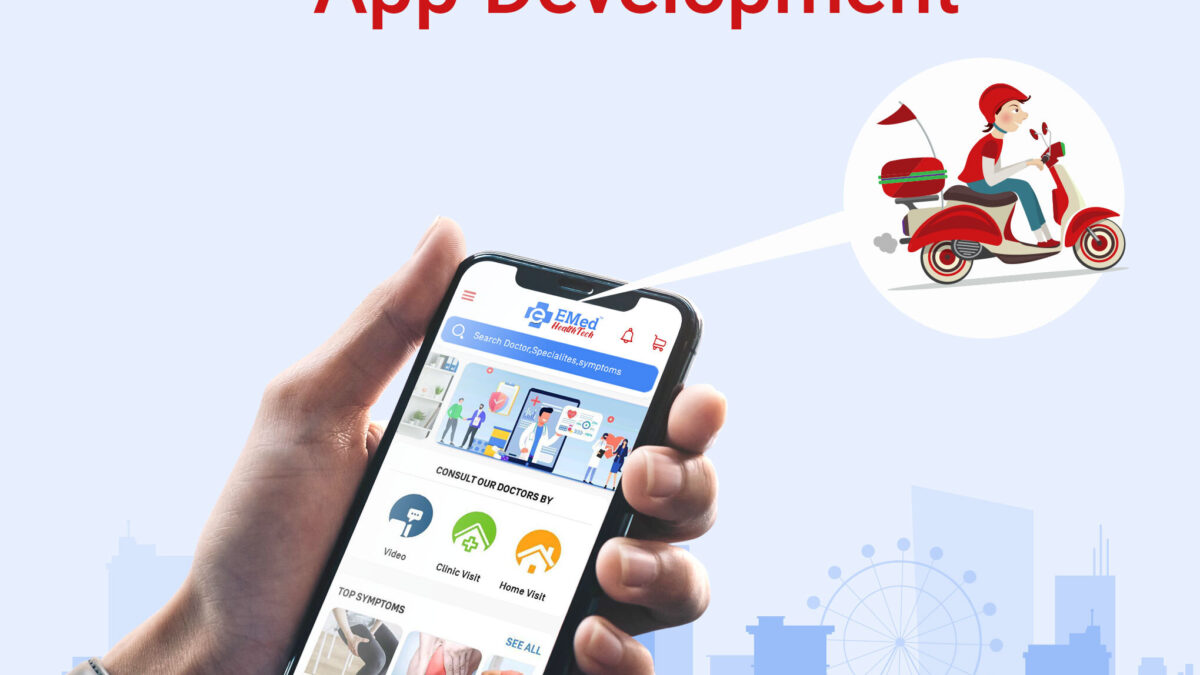Consumers often prefer medicine delivery apps due to the ease of use, wherein they can order medicines online with just a few clicks and have them delivered to their doorstep. Besides, there are advantages like privacy, no travel costs involved, easy check on medicine availability, and more competitive prices when buying online.
For pharmacy retailers, the advantages that medicine delivery apps provide are:
Improved customer base
Improved brand building
Enhanced marketing options
Higher revenue generation
Easy and secured payment
If you want to implement an online pharmacy, there are many ways to do it.
Whether you have a pharmacy marketplace, you sell medicines directly online or you sell offline to online, EMed HealthTech can develop a custom online pharmacy app to suit your business needs.
Now let us understand some of the popular business models of medicine delivery apps:
Single-Store Model: In this model, a single store or medical company develops a single integrated medicine delivery app and enlists all available medications. Users can easily browse through the medicines available, choose the required items, and place an order for delivery. You can sell medicines through this model if you own a single pharmacy store. It acts as a digital twin of your pharmacy store.
Pharmacy Chain Model: In this model, if you have more than one pharmacy store, you can bring all your branches under one digital ambit and provide an identical seamless user experience across all your pharmacy stores.
Aggregator Model: This model allows an investor or business owner to create an online pharmacy marketplace by collaborating with different pharmaceutical stores, enabling them to sell medicines through their mobile app. Customers get a wide range of options to purchase medicines from all enlisted stores.
Key Features of Medicine Delivery App Development
As an experienced medicine delivery app developer, our team at EMed recommends a good medicine delivery app to have role-based user permissions. There should be four user roles – customer, pharmacist, admin, and courier delivery, with each role having a specific list of feature stacks. Let’s talk about them one by one.
Features for Customers:
- Registration and login – Customers need to be able to easily register and log in using a mobile number or email ID and password.
- User profiles – Customers should be able to manage their profiles, delivery addresses, payment details, etc.
- Prescription upload – A medicine ordering app development should allow customers to upload pictures of their prescription and get them reviewed by a pharmacist.
- Search medicines – It should be easy to search for medicines through filters.
- Drug Details – Before ordering, customers should be able to check the details of medicines, and manufacturers and compare prices.
- Search for substitutes – Medicine delivery apps should enable customers to find generic alternatives to branded medicines.
Features for Pharmacy:
- Easy account set up – To enable quick, easy onboarding for pharmacies.
- Store details – Pharmacy owner or manager should be able to add, change, and remove medication lists and information related to medication.
- Product management – To help the pharmacy owner manage and update product details.
- Manage payments – To receive payments directly and track all payment details in real-time.
- Order history – To give users access to the complete history of their past orders.
Features for Admins:
- Dashboard – Admins should be able to view and manage all ongoing orders, active pharmacists, customers, delivery personnel, and overall earnings on a single web view.
- Inventory – To help manage medicines inventory and notify on low stocks and expiry dates.
- Manage customers and suppliers – To manage registered customers, suppliers, and manufacturers.
- Analytics and reports – Admins should be able to check all operational data and statistics to create reports on business workflow.
- Marketing actions – To take marketing activities based on analytics and reports to attract customers and increase business.
- Order management – The admin should be able to manage order processing and returns.
- Payment collections – To keep track of weekly, monthly, and yearly earnings.
- Discounts and offers – To provide discounts and offers on medications as part of marketing strategies.
Medicine Delivery App SDLC
The software development life cycle (SDLC) of our medicine delivery application is as follows:
Analysis – Our expert team will analyze user requirements and use them to prepare technical documentation
UI/UX Design – The next stage is developing the interaction between design elements and finalizing the UI/UX of the app.
Development – Once the app design is ready, the front-end and back-end coding are integrated to create a fully functional app.
Testing – The app is tested to check the key areas like usability, security, interface, etc.
Deployment – After thorough testing and re-testing, the app is deployed to the server using FTP, and subsequently final test is performed.
Maintenance – Once the app is published, we provide maintenance and support to ensure smooth, bug-free operation.
We are EMedHealthTech, the industry leader in the online pharmacy app development segment. We’ve helped thousands of stores streamline their business processes and create additional revenue streams by providing them with an online pharmacy platform.
Want to get an online pharmacy platform for your pharmacy also? Get the EMed HealthTech online pharmacy platform today.


